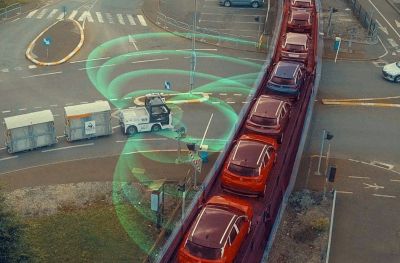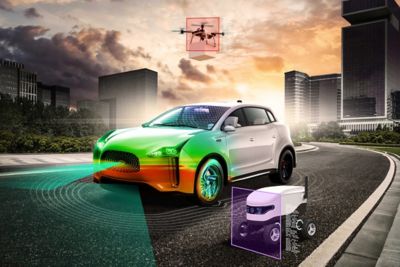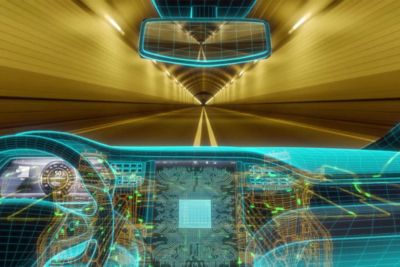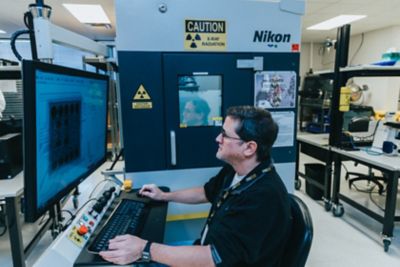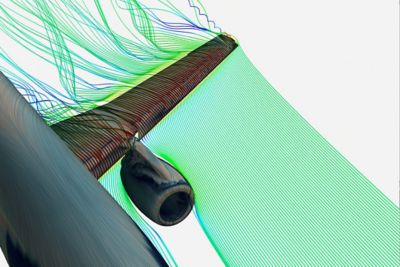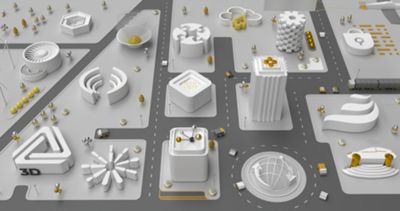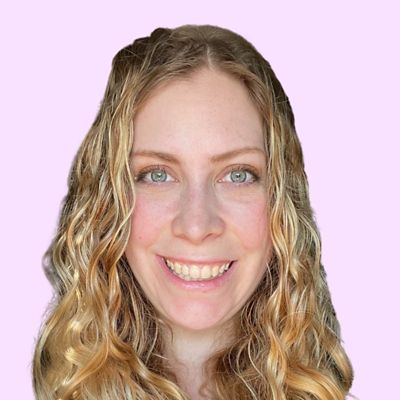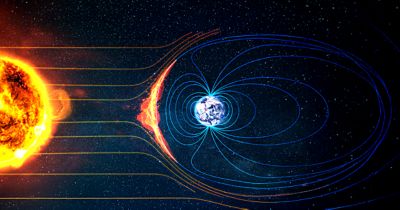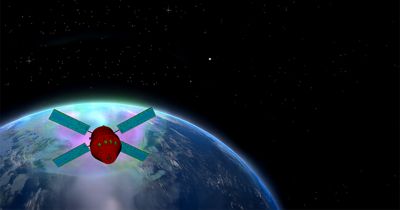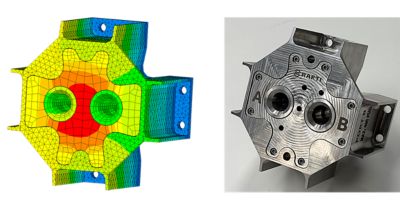What do engineers from the early 1800s and modern rocket scientists have in common? One thing that connects them is the math that they use to understand the world around us, such as the formulas used to track satellites.
Also similar is the palpable excitement about an industry on the verge of a major shift. In the 1800s, engineers may have been excited to see the rise of different public transit systems — canals, roads for horses, and railroad systems spanning countries and continents — and in our modern age, the next stage for transit may be in outer space. However, innovation in new frontiers is never easy. Succeeding in this celestial venture will require figuring out how to create a viable space economy, says John Carrico, owner, chief technology officer, astrogator, and technical adviser at Space Exploration Engineering (SEE).
The path forward will involve a great deal of innovation to revolutionize the space industry in new ways, from low-thrust engines to efficient propellants. That’s where companies like SEE come onto the field. Using its aerospace expertise and knowledge from participating in more than 60 operational space missions, SEE acts as an adviser and a mentor to help make aerospace companies “more successful more quickly than previous missions,” says Craig Nickel, principal aerospace engineer, flight dynamics and mission operations specialist at SEE.
By partnering with a wide variety of industry-leading companies, SEE has a front-row seat to the future of space. SEE is helping companies of all types — commercial and governmental, legacy and new space, low Earth orbit (LEO) and deep space — overcome major challenges in designing, planning, analyzing, and operating missions to achieve success and bring the industry closer to a thriving space economy.
Addressing Growing Pains in the Space Industry
The space industry is relatively young; even NASA was established less than 70 years ago, in 1958. Despite this short period, a lot has changed.
To start, the space industry — like the universe itself — is constantly expanding. This is especially true in recent years, as we’re seeing an uptick in providers, spacecraft developers, and operators. While exciting, this shift is at the core of some of the key challenges facing the industry today.
“Space is getting a little congested and messy,” says Nickel. “The biggest challenge facing the space industry and satellite operators is collision avoidance and being able to mitigate that risk so everybody can continue to operate safely in space.”
One requirement for achieving this goal is to ensure information sharing between operators to improve operational safety. However, communicating and collaborating in this growing industry is yet another challenge we need to overcome. Important information is siloed because of company or national policies, and different countries have different standards that they need to comply with, which can cause confusion, says Carrico. There may even be issues when coordinating within a single country due to old laws and regulations, many different “standards,” and changing government priorities and incentives in the space industry.
In an already challenging environment, commercial space ventures face more hurdles related to profitability. “The interesting thing about commercial space is that investors need a return on investment and desire the timeline to be quicker than space missions typically take,” says Carrico. These goals mean that commercial space companies may be optimizing for different goals than governmental groups.
Meeting company-specific goals can require custom analyses to identify options for satisfying unique goals and objectives. For instance, a commercial company may want more launch opportunities, so it will sacrifice some margin on its final orbit accuracy, Nickel says.
To reach these ambitious goals, commercial companies are also constantly innovating to push the limits of what’s possible. The rapid pace of this innovation results in even fewer accepted “rules” or standard practices to rely on. As a result, engineers don’t just need custom analyses — they need analyses that are quick and flexible enough to keep up with advancements. And simulation can fill this role.
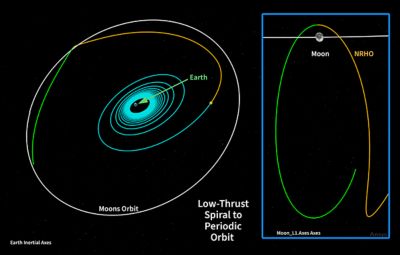
An optimized low-thrust trajectory from Earth to a lunar NRHO orbit, designed by Space Exploration Engineering (SEE) with Ansys Systems Tool Kit (STK) digital mission engineering software
The Role of Simulation in the Modern Space Age
While some of the fundamental math used in the space industry has been used by generations of engineers, the sophistication of the technology that applies this math to a problem has grown exponentially. “It’s not that we’ve got better algorithms, but we can run them faster and more often,” says Carrico. Given the same 10 minutes, an engineer from the 1800s could complete a few calculations by hand while modern engineers with access to tools like simulation and cloud computing can generate thousands of outputs.
This multitude of results provides a statistically significant sample to better assess risk, says Nickel. As such, tools like simulation software empower modern engineers to confidently trim down margins and accept tighter tolerances on requirements. This increases efficiency and lowers costs by, for example, accurately determining the minimal amount of propellent needed to achieve mission objectives. Engineers can use these results to manage uncertainty and find more opportunities for success.
As for SEE’s role in this process, the company benefits from being at the nexus of legacy space missions and startups. SEE can aid smaller companies in identifying and managing risks using its experience with the rigorous techniques and practices that it continues to develop and apply to expansive government missions. Leveraging the power of Ansys software, SEE can identify and communicate the trade- offs between reducing costs and increasing mission success probabilities. This is particularly important for commercial companies that are focused on maximizing their return on investment and minimizing spending.
As one example, consider a company deciding between two spacecraft engines for a lunar mission. One engine may have slightly better performance but comes with a higher price tag. SEE can help determine if this engine is worth the cost by using Ansys simulation software to determine how significantly the engine differences will impact the design and overall mission viability.
Throughout its partnerships, SEE has applied simulation to help partners innovate, manage risks, increase efficiency, and minimize costs throughout the entire mission. “We’ll go through the whole design process and then stay through operations until the end of the mission,” says Carrico.
For examples of the diverse benefits of simulation software in the space industry, let’s explore some of SEE’s previous work.
Using Simulation for Mission and Trajectory Planning
If you were to fly into the space surrounding Earth, you’d find space debris almost anywhere you turned: in LEO, cislunar space, and even lunar space. That’s in addition to the growing number of active spacecraft, such as CubeSats and mega-constellations. This crowded environment means that planning your trajectory and getting into your orbital slot can be like “threading a needle,” says Carrico.
To help solve this challenge, SEE uses Ansys Systems Tool Kit (STK) digital mission engineering software and Ansys Orbit Determination Tool Kit (ODTK) orbital measurement processing software to calculate probabilities and determine the optimal trajectories that spacecraft operators need to achieve mission success.
This work is also aided by collaborating with third-party commercial providers that can help streamline the process of determining an orbit that will avoid collisions.
The Need for Simulation in Enhancing Communications
Improving existing communication capabilities is an imperative stepping stone on the way toward a future space economy. For instance, as more commercial companies attempt to traverse deep space, the ability to contact their spacecraft will become increasingly challenging, says Nickel. Although solutions like NASA’s Deep Space Network (DSN) exist, the DSN is currently overtaxed and will not be able to support all future deep space missions. As a result, the future space economy will need additional ground network providers.
The fast-moving space industry is already hard at work to mitigate this challenge. “Commercial providers, in response, are building larger, more capable antenna dishes,” says Carrico. NASA is also encouraging commercial companies to provide these services by awarding those that can support relay satellites for communication, tracking, positioning, and timing.
SEE applies Ansys simulation software to this communications challenge in a variety of ways, such as performing link budget analyses, as well as modeling trajectories, coverage, and networks. This helps SEE determine the best locations to place satellite dishes and antennas to achieve mission goals.
“The Ansys software allows us to model not only the specifics of our orbit but all sorts of hardware and other constraints on Earth, such as if communications are going to be blocked by a mountain,” says Carrico. With this knowledge, the company can determine the best way to avoid communication obstructions.
As an example of this work, take the KPLO/ Danuri mission in Korea, which involved bringing a new ground antenna online and designing a ground system using STK and ODTK software. During this mission, SEE provided support for operations, system accuracy analysis, and validation — using simulation to help ensure mission success.
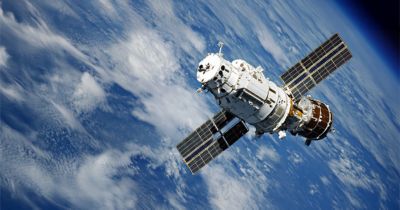
Quickly Responding to Emergent Contingencies With Simulation
A sense of directed chaos permeates a command room that is packed with engineers who are trying to determine why their spacecraft is undergoing a sudden, unexpected issue. There are people at every console, pens flying over paper, teams poring over spreadsheets, and urgent conversations happening in every corner of the room. In the middle of it all, SEE is using Ansys simulation software to try to determine what happened — as well as the next corrective course of action.
This “targeted commotion,” as Nickel calls it, isn’t theoretical. After the launch of Astrobotic Technology’s Peregrine mission, Astrobotic noticed a propulsion anomaly, which ended up being a constant oxidizer leak that affected its orbit. The SEE and Astrobotic flight dynamics engineers used STK software to model the leak during the mission. They used the model, along with other observations, to determine what was occurring and how it would affect the trajectory.
“We would solve for where we thought was the effective acceleration, where the leak was in the body frame, and then we would go over to other parts of the control center and talk to the guidance, navigation, and control (GNC) folks … and we would say, ‘We think the leak might be here,’ and we could compare results,” says Carrico.
Through this process, SEE and Astrobotic were able to determine where the leak was coming from and its strength. They then could predict the spacecraft’s current path and make a few critical calculations, including solving for the thrust correction and planning for a safe reentry into Earth’s atmosphere. These corrections, which were made via their adapted model, were used in real time, “so we were able to keep (the spacecraft) alive for the rest of the mission,” says Nickel.
Even with a disabled spacecraft that did not land on the Moon, Astrobotic gained a lot of new knowledge, such as data on different payloads and information on how different elements perform in space, which “is buying down the risk for future missions and for their customers,” says Carrico.
Why Collaboration Is the Future of Space
With the rise of commercial space startups, the space industry is moving quicker than ever, but that doesn’t mean that the culture is simply competitive.
“We need lots of people doing different things in space who interact to establish a true space economy,” says Carrico. Across the industry, there is mutual excitement about this burgeoning new space industry and the shape of the future cislunar economy.
“Being collaborative is certainly a part of making that ultimately successful,” says Nickel. In particular, empowering the broader community to leverage lessons learned from all the missions taking place today via information sharing is key.
These global collaborations can happen in a variety of ways, such as between different startups focused on complementary technologies, with third-party providers that offer time-saving services via cloud computing, or between governmental and commercial organizations. Throughout these partnerships, simulation and digital engineering can also serve as a connecting thread that enables knowledge sharing and the formation of new, innovative technologies that will help us launch a new space economy.
Learn More
Find out about other exciting work that is helping to form the foundation for a new space economy.
Just for you. We have some additional resources you may enjoy.
“The Ansys software allows us to model not only the specifics of our orbit but all sorts of hardware and other constraints on Earth, such as if communications are going to be blocked by a mountain.”
— John Carrico, owner, chief technology officer, astrogator, and technical adviser, Space Exploration Engineering (SEE)
